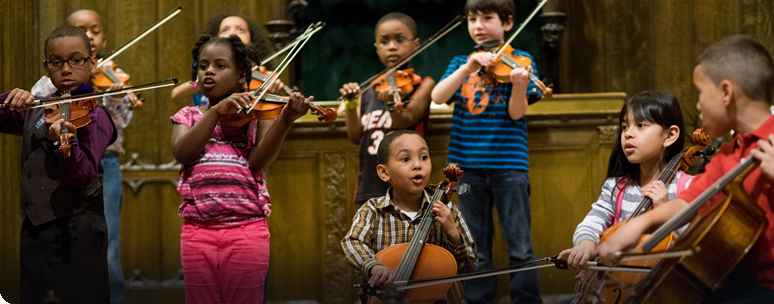Carole’s note reading classDuring February vacation's "Teaching Intensive Week," several CMW staff led special classes, including pilot classes designed for the parents of CMW students. Carole offered a class to help parents learn the basics of reading music. Here are a few excerpts: Looking at a piece of music We constantly are using terminology and symbols to write down these musical concepts to understand them. I often describe it as learning another language, because there are so many different small details to memorize and integrate into your thinking. When we first look at a piece of music, there are a few basic things that you will always see, and identifying these things is key to understanding how the musical notation on the paper relates to the music that we hear all the time. Pitch is exactly how high or low a sound is. Note is the symbol we use to write pitches down on paper. The different parts of notes are head, stem, flag. The Staff is the five lines and four spaces where we put our notes. Each line and space is given a name from the musical alphabet: A-B-C-D-E-F-G-A, and it repeats indefinitely. At the beginning of a staff, you will see a clef. The clef tells you the name of each line and space. Each clef has a way of showing you where the notes fall on the staff that it is fronting. There are four different clefs, treble, bass, alto, and tenor. The clef is dependent on the instrument it is written for. Treble clef is also called the G clef, it loops around the G-line on its staff. Higher ranged instruments like the violin, flute, guitar, or trumpet read music in treble clef. Bass clef is also called the F clef, because its hook and two dots show you the F-line on its staff. Lower ranged instruments like the cello or double bass read music in the bass clef. The longest note you will have is a whole note. You can compare shorter note values to a whole note. When thinking in terms of note lengths, we often use fractions to determine the lengths of notes. Rests are symbols that show you where the silences are in a piece of music. Every note value has a related rest of the same value. Accidentals are symbols that indicate how a note can be altered in sound. There are three different accidentals. A sharp (#) will raise the pitch of a note by one half step. A flat ( Scales are groups of notes arranged in steps, just like a staircase. It starts and ends on the same note. There are major scales and minor scales. |


 b) will lower the pitch by one half step. A natural (
b) will lower the pitch by one half step. A natural (